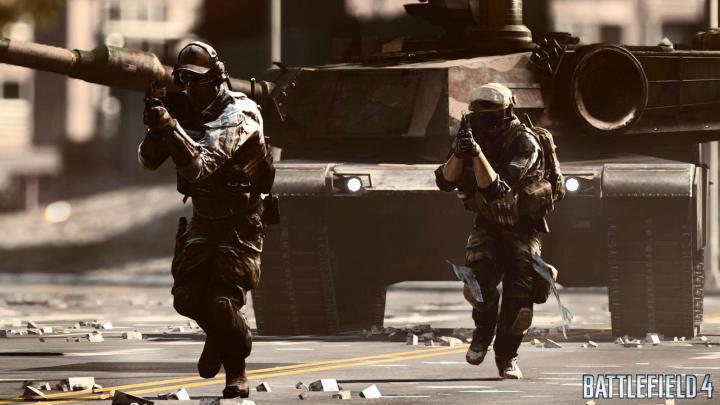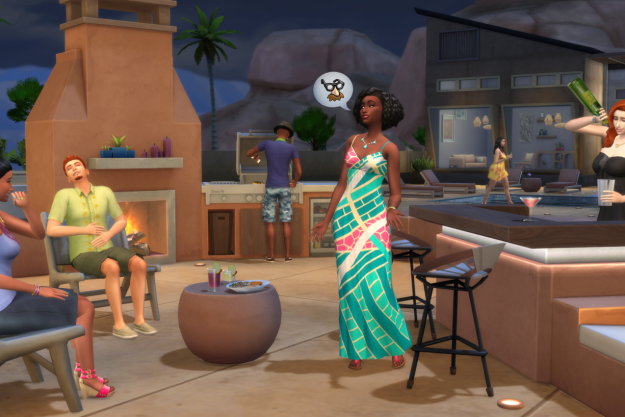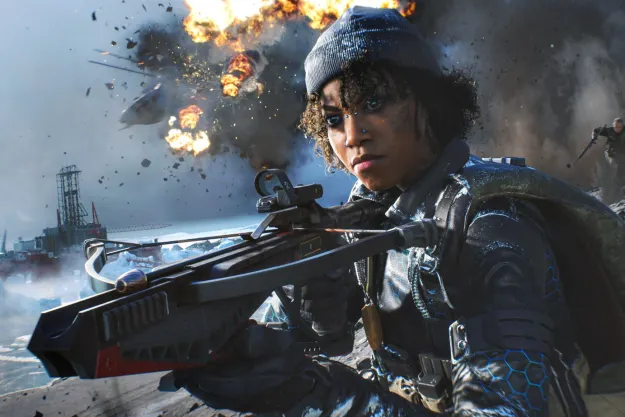
If the answer is the former, then you should probably sit down and take a good, long look at your life. Why are you putting hours into a game that you don’t enjoy? What does this say about you? We can’t answer those questions for you. We can, however, help you if you’re doing it wrong. The Battlefield games demand some skill from their players in terms of reflexes and hand-eye coordination, but it isn’t a traditional “twitch” shooter. It’s even possible to excel in Battlefield 4 without ever firing a shot. Following the advice here won’t guarantee success, but it will definitely give you an edge when you gear up and head off to make fake war.
Class warfare
The four basic soldier classes – known as “kits” – in Battlefield 4 return from previous games, with unlocks opening up as you pile points into each kit-specific “Score”. Here’s your top-level breakdown: Assault is the machine gun-toting footsoldier with unlocks focusing on first aid and explosives; Engineer handles vehicles and anti-armor needs, and is also capable in close-quarters engagements with SMGs as the default weapon; Recon is built for ranged warfare, with a sniper rifle and an assortment of rangefinders that are useful for reconnaissance; and lastly, Support is a medium-range attacker equipped with high-capacity LMGs (Light Machine Gun) that are good for suppression and the ability to re-supply teammates. The key to playing any Battlefield game effectively is understanding the delicate balance between these classes and sticking to your chosen class’s particular script.

Assault: If you go with Assault, you are front-line infantry. You want to be at the forefront of any advance, but you also need to have the combat awareness to know when you should deploy explosives and/or healing items (depending on how you set your loadout). This is the most “traditional” shooter class and, as such, it’s a good choice for any match type. Just run into battle and shoot the enemy until you can shoot no more, then respawn and do it again. Sticking to medic duties only is equally viable, though fans of the series should take note: the first aid pack that is unlocked by default is now a single-use pickup (as opposed to the multi-use drop in Battlefield 3). You’ve got an unlimited supply, but each pickup only affects one player at a time. You can still unlock the previous game’s Medic Bag, but it comes much later in this class’s progression (Assault Score of 100,000).
Engineers: This class works best on foot work best when paired with someone else using the Recon class; the latter’s rangefinder can “paint” enemy vehicles, providing improved lock-on capabilities for the Engineer’s anti-armor weapons. You’ll definitely want to play with an Engineer for long enough to at least unlock Carbines (requires an Engineer Score of 15,000); it doesn’t take very long, and it opens up a class of medium-range automatic fire weapons that all classes can use. If vehicles are more your thing, make sure you’ve always got a Repair Tool in your loadout and get into the habit of fixing every broken thing you see. Those points add up quickly. With Engineers, you’ll generally want to avoid small-team match types like Team Deathmatch and stick to larger engagements – Conquest, Rush, and Obliteration – particularly on maps that feature lots of vehicles. The engineer’s SMGs work well on small maps, but you get much more value in small-team games from Assault and Support classes.
Recon: This is a tricky class to excel with if shooting isn’t your thing. Sniper rifles – especially the starting one – fire slowly and don’t do enough damage to deliver a one-hit kill unless you’ve got the accuracy (or luck) to hit a critical location. Bullet drop is a very real concern as well when you’re engaging at long ranges. You can easily spot the bullet’s path and impact point through the scope then adjust your aim accordingly, but this can also give your position away. For a truly accurate first shot, you’ll want to zero your scope for the appropriate range; to do this, press down on your controller’s D-pad to cycle through the different range settings. You’ll need to know the range first though, and you can get that by sighting your target through Recon’s PLD (Portable Laser Designator) rangefinder. This is a viable class for any big team mode, but Recon excels most in Rush, especially on the attacking team. Find your sniper’s roost and support your team by picking off enemy troops, one at a time, from extreme distances.
Support: Another all-purpose class that has its uses in both big-team matches and smaller games. Having the ability to flood the battlefield with a massive surge of bullets is valuable, even if you’re not scoring tons of kills. While Support’s LMGs are plenty lethal at medium ranges, this is not a class built for taking potshots. What you want to do is lay down a field of fire in the general direction of where the enemy is coming from or taking cover. This scores you points for suppression, and it screws with the aiming ability of anyone being suppressed. All classes can lay down suppressing fire and score points from it, but Support is specifically built for that.

Specialty paths
Field Upgrades replace Specializations in Battlefield 4. Instead of picking a single buff – such as increased durability against explosive damage – you pick a full set of four that fall into a specific category. Only one buff is active at first, though you can unlock the rest by filling a meter connected to team play. More on that in a moment. First, let’s talk about what Field Upgrades actually do.
A meter at the bottom of the screen denotes which level you’re at in your current Field Upgrade path (it resets with every match). To fill the meter, you’ve got to participate in “squad actions.” Each team in Battlefield 4 further breaks down into smaller squads of up to five players. Teammates and teammate names appear in blue, while squadmates and squadmate names appear in green. By resupplying, healing, and repairing squadmates, and by following squad orders to attack/defend specific targets (which only the squad leader can issue), the meter fills. If everyone in your squad is wiped out, you drop down one level in your Field Upgrade path.
There are three default upgrades that all kits can use: Defensive and Shadow are unlocked by default, and Offensive must be unlocked in each kit. Then there are also kit-specific Field Upgrades, two apiece, that allow you to tailor your soldier in one specific direction or another. Let’s look at the Offensive Field Upgrade as an example. At level one, you get a 10-percent boost to your sprint speed. Level two increases your ammo cap by 50-percent, level three allows you to carry one more hand grenade, and level four ups the distance you can fall without taking damage.

Choosing the right Field Upgrade path for you is a matter of how you want to boost your abilities. The three default options work well enough, but you’ll definitely want to switch to one of the kit-specific options once those become available. If you’re doing things right and sticking to a specific role for your chosen class whenever possible, these upgrades serve to make you more capable in that role. Field Upgrades can be swapped in and out just like any other piece of your kit’s loadout, so don’t be afraid to experiment. You’re not locked into any choices.
Know your modes
Most of the match types in Battlefield 4 will be familiar to returning fans, but there’s a couple of new ones as well. And hey, returning fans are less likely to be reading this anyway. Given all of that, we’re just going to run through all of the different modes and how they’re played.

Conquest is the classic big-team match, built around competing forces that vie for control of a series of control points (the number varies by map). To claim these for your team, one or more players must remain in the vicinity of the control point’s flag until a meter fills up. If the point was previously claimed by the opposing team, the wait time doubles as you must first wait for the meter to drain, and then fill up again. The winning team is the first one to drain the other team’s tickets (one ticket is consumed for every respawn). Controlling a majority of the points on a map also causes the opposing team to slowly “bleed” tickets, which means that holding more points brings a speedier victory.
Rush is another Battlefield classic. The attacking team is tasked with planting bombs at points labeled A and B – called MCOM stations – then defending the plant location against defuse attempts by the other team until the bomb goes off. Detonate the first two MCOM stations, and a second pair appears elsewhere on the map. This process repeats until all MCOM stations on a given Rush map are destroyed, or until the attacking team’s tickets are depleted. The ticket count resets whenever a new set of MCOM stations appears, however, effectively re-leveling the playing field.
Obliteration is a new mode in Battlefield 4. Two teams fight to take control of a bomb that spawns in a random location. The team that possesses the bomb needs to bring it to one of the opposing team’s three MCOM stations, plant it, and defend the location until the bomb detonates. Once a bomb goes off, a new one spawns and the process begins anew. The bomb tends to change hands quickly, since its location is always visible to all players and fragging the carrier causes it to drop. There’s a heavy emphasis on team play and sticking with the group in this fast-paced match type.

Domination is a flag capture mode in the vein of the similarly named Call of Duty match type. It’s like Conquest in a lot of ways, except this mode is for small-team battles (10v10) on pint-sized maps with no vehicles. Otherwise, it works the same as Conquest. Control flags, drain the opposing team’s tickets, first team to have its tickets zeroed out loses. Simple.
Team Deathmatch and Squad Deathmatch are two different modes built on the same basic idea: kill everyone that isn’t an ally. This is another small-team, small-map match type, with 20 players in both TDM and SDM. For the team-based variant, it’s a 10v10 match with the winner decided by a target kill count. For the squad-based variant, it’s four teams of five pitted against one another in a race to hit a specific kill count.
Defuse is another mode that should be familiar to Call of Duty fans, though they’ll know it as Search & Destroy. This is the smallest of Battlefield 4‘s multiplayer modes, with two teams of five facing off, one as the attacker and the other as the defender. The attacking team has a bomb that must be planted and defended until detonation at one of the opposing team’s two objective locations. Meanwhile, the defending team wants to run down the clock in an effort to keep the bomb from detonating before time runs out. This is a no-respawn mode – though all players can be revived once per round, provided there’s a defibrillator close at hand – so it’s also possible for either team to win by completely wiping out the other team.
Editors' Recommendations
- The Sims 4: For Rent expansion pack pits landlords against tenants
- Battlefield 2042 Season 4 will introduce the game’s final Specialist
- Battlefield 2042 is coming to Xbox Game Pass later this month
- FIFA 23 career mode guide: Lead your team to glory
- FIFA 23 beginners’ guide: Tips and tricks to level up your soccer skills


